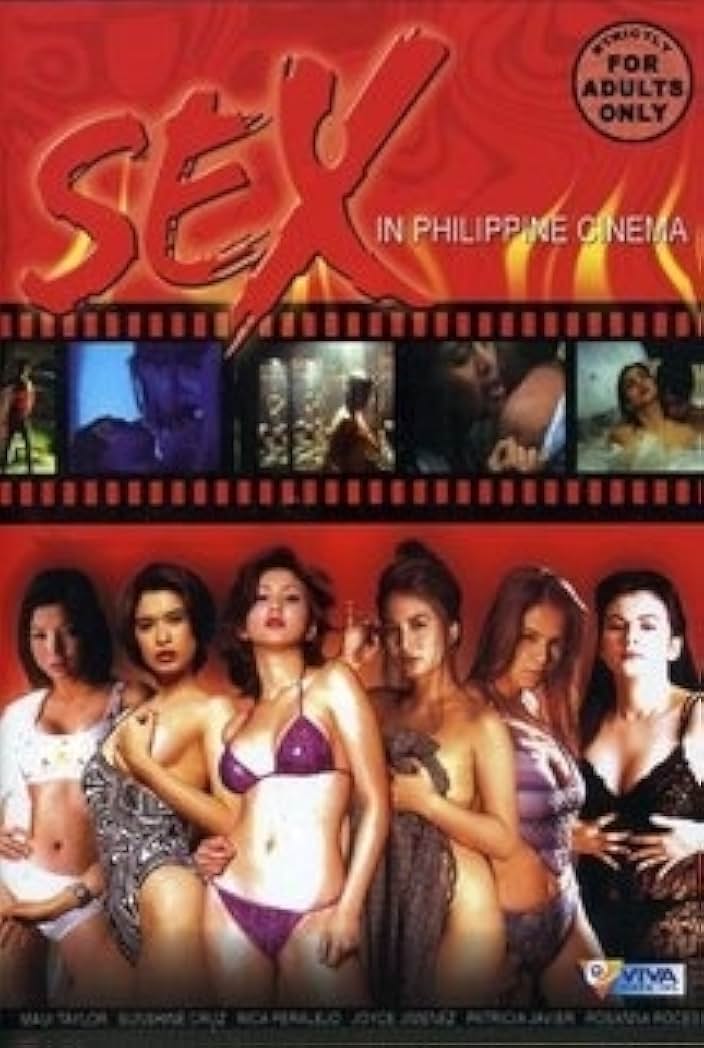Sex in Philippine Cinema (2004)

“Sex in Philippine Cinema” (2004) is a comprehensive and insightful documentary that delves into the multifaceted ways in which intimacy, relationships, and related themes have been portrayed on screen throughout the history of Philippine filmmaking. Rather than focusing solely on explicit depictions, the film offers a nuanced exploration of how these sensitive subjects have been navigated, reflecting evolving social norms, cultural values, and artistic expressions within the Philippine context.







The documentary meticulously traces the trajectory of these representations, beginning with the early days of Philippine cinema. It examines how nascent storytelling approached themes of courtship, familial bonds, and societal expectations surrounding relationships. Archival footage and insightful commentary from film historians, critics, and filmmakers illuminate the subtle ways in which these topics were addressed, often constrained by the prevailing social conservatism of the time. The film highlights the use of allegory, symbolism, and implied narratives to convey emotional connections and interpersonal dynamics without explicit visual or verbal articulation.
As Philippine cinema matured, so too did the ways in which intimacy and relationships were depicted. The documentary explores the gradual shift towards more direct portrayals, influenced by global cinematic trends and changing societal attitudes. It examines how different genres, from romantic dramas to melodramas and even comedies, tackled these themes, often reflecting the complexities and contradictions inherent in human connections. The film analyzes how filmmakers navigated censorship and societal pressures while still attempting to portray the realities of human experiences.
A significant portion of “Sex in Philippine Cinema” is dedicated to understanding the cultural and societal factors that have shaped these on-screen representations. The documentary explores the influence of religion, family structures, and traditional values on how intimacy and relationships are perceived and portrayed in the Philippines. It examines how these cultural nuances have both constrained and informed cinematic narratives, leading to unique and often layered depictions of human connection.
The film also critically examines the concept of “bold films” that emerged in certain periods of Philippine cinema. Rather than sensationalizing these productions, the documentary analyzes their socio-political context and their impact on discussions surrounding freedom of expression and the boundaries of on-screen representation. It explores how these films, while sometimes controversial, also reflected changing social mores and a desire to explore previously taboo subjects. The documentary offers a balanced perspective, acknowledging both the artistic intentions and the potential for exploitation within this cinematic landscape.
Furthermore, “Sex in Philippine Cinema” delves into the portrayal of various forms of relationships, including familial bonds, friendships, and romantic connections. It analyzes how these different types of relationships are depicted, highlighting the emotional complexities, power dynamics, and societal expectations that often come into play. The documentary showcases how Philippine cinema has explored themes of love, loss, commitment, and betrayal through a uniquely Filipino lens.
The documentary also pays attention to the representation of gender roles and their impact on how intimacy and relationships are portrayed. It examines how traditional notions of masculinity and femininity have influenced cinematic narratives and how evolving gender dynamics are beginning to be reflected on screen. The film analyzes the portrayal of male and female characters within the context of their relationships, highlighting both the progress made and the persistent stereotypes that continue to exist.
“Sex in Philippine Cinema” benefits greatly from the perspectives of various individuals involved in the Philippine film industry. Interviews with directors, actors, writers, and producers provide valuable insights into the creative processes and the challenges faced when depicting sensitive themes. Their personal anecdotes and professional experiences offer a behind-the-scenes look at how these narratives are constructed and the considerations that come into play.
The documentary also explores the audience reception to these portrayals of intimacy and relationships. It examines how different generations of Filipino viewers have responded to these on-screen representations, highlighting the evolving attitudes and the ongoing dialogue surrounding these topics. The film underscores the power of cinema to both reflect and influence societal perceptions of human connection.
In its comprehensive exploration, “Sex in Philippine Cinema” avoids simplistic categorizations and instead embraces the complexities and contradictions inherent in its subject matter. It acknowledges the diverse range of cinematic expressions, from subtle implications to more direct portrayals, and seeks to understand the underlying cultural, social, and artistic forces that have shaped them. The documentary ultimately presents a nuanced and thought-provoking analysis of how Philippine cinema has grappled with the intimate aspects of human experience.
The film’s strength lies in its ability to contextualize these on-screen representations within the broader socio-political landscape of the Philippines. It demonstrates how cinema has served as a mirror reflecting societal values, a platform for challenging norms, and a space for exploring the complexities of human relationships. By examining the evolution of these portrayals, “Sex in Philippine Cinema” offers a valuable insight into the changing cultural fabric of the Philippines.
In conclusion, “Sex in Philippine Cinema” (2004) is a significant contribution to the understanding of Philippine cinematic history and its engagement with themes of intimacy and relationships. Through its insightful analysis, archival footage, and expert commentary, the documentary provides a comprehensive overview of how these sensitive subjects have been navigated on screen. It moves beyond superficial interpretations to explore the cultural nuances, societal influences, and artistic expressions that have shaped these portrayals. The film serves as a valuable resource for anyone interested in Philippine cinema, cultural studies, and the evolving representation of human connection in visual media. Its nuanced approach and thoughtful examination make it a compelling and informative viewing experience, offering a deeper appreciation for the complexities of portraying intimacy and relationships within a specific cultural context. The documentary ultimately underscores the power of cinema to reflect, shape, and engage with the most fundamental aspects of the human experience.

